Satellites orbiting Earth
Have you ever wondered how many Satellites orbiting Earth? According to the Union of Concerned Scientists (UCS), which maintains a database of active satellites in orbit, as of December 31st, 2022, there were a total of 6,718 active satellites in space, of which almost 6,000 were in , 141 , 580 and 59 elliptical satellites. 60% are used for communications and others have a wide variety of roles: GPS satellites and navigation, weather forecasting, national defense, science, and agriculture, as in monitoring crops and areas of drought.
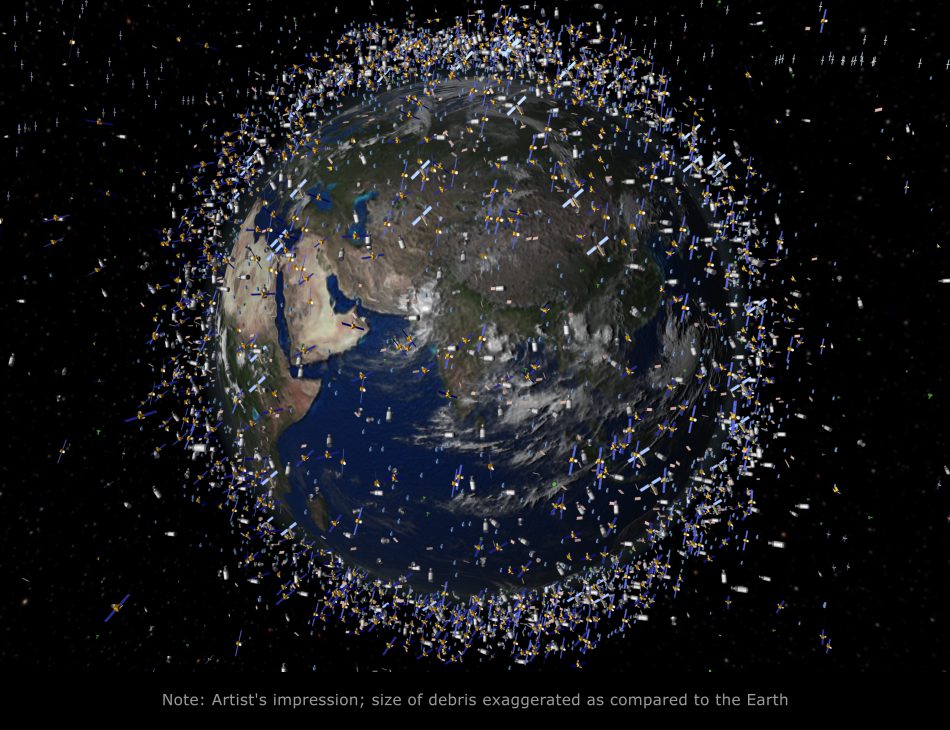
Note: The debris field shown in the image is an artist’s impression based on actual data. However, the debris objects are shown at an exaggerated size to make them visible at the scale shown
Plus there are about 2,600 satellites that no longer work. Russia launched the first satellite, Sputnik 1, in 1957. The oldest one still in orbit, which is no longer functioning, was launched in 1958.
More than 65 countries own a satellite or a significant share in one, according to UCS. There is an interesting infographic on the UCS site showing the change in countries operating satellites between 1966, 2016 and 2020:
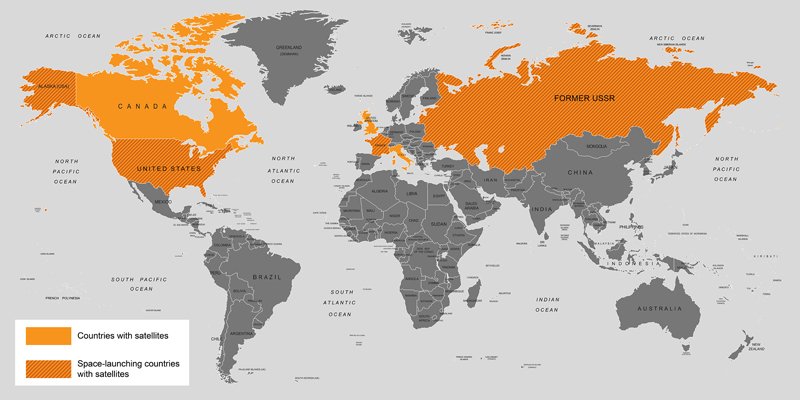
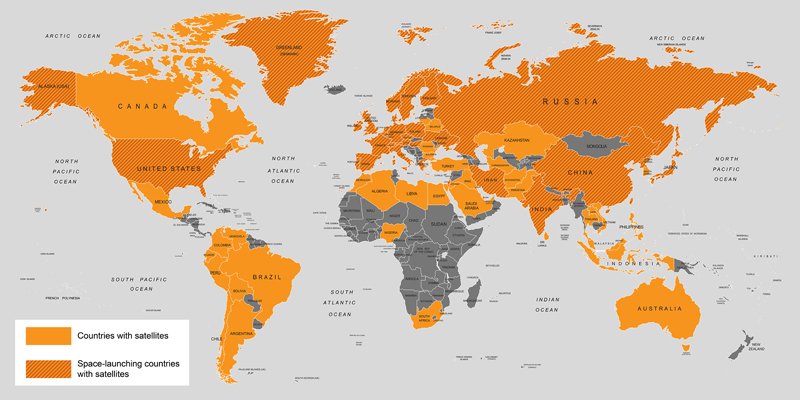
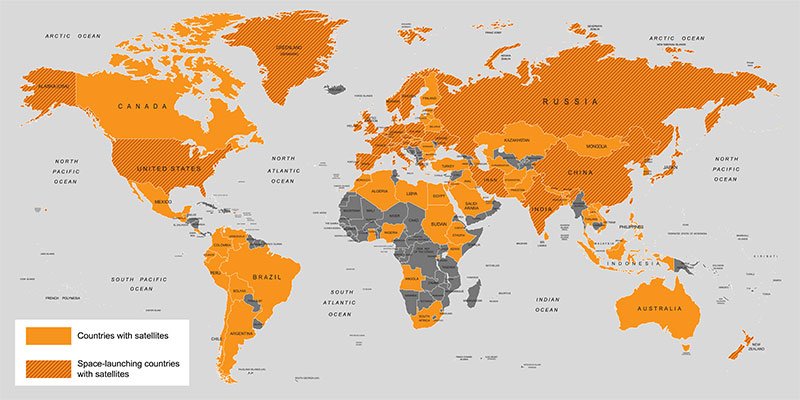
The majority of the satellites orbiting Earth are operated by USA commercial companies (3,996), US government (260), US military (247) and civil organizations (26). Other nations that operate a great number of satellites are China with 590, UK with 561, Japan with 205, Russia with 160 and India with 124 spacecrafts in orbit.
The number of satellites in orbit is still growing. The busiest among the lot being SpaceX led by Elon Musk, which has been launching satellites at an average pace of one mission per month for its Internet project Starlink. So far, it has launched more than 5,000 into orbit and has plans of tens of thousands more.
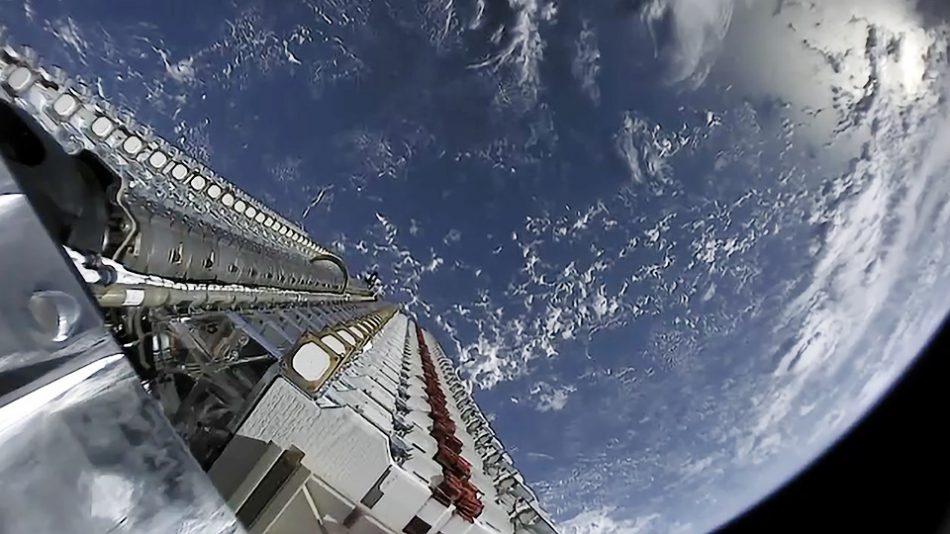

Jeff Bezos’ Amazon recently announced its plans to launch a mega constellation of 3,000+ satellites (Project Kuiper) to provide Internet connection to under-connected parts of the world. Research firm Euroconsult predicts 2020’s to be the decade of small satellites, with an average of 1,000 smallsat launches per year. To put this in perspective, a total of 385 smallsats were launched in 2019.
Satellite operator Telesat from Canada recently announced its planned LEO constellation, Lightspeed, containing 1,600 spacecrafts in orbit. In 2019 Eutelsat announced their ELO constellation of 25 nanosatellites dedicated to the Internet of Things (IoT). Also satellite operator Inmarsat, recently acquired by Viasat, unveiled plans for the LEO satellite constellation Orchestra.


The recently revived UK-based OneWeb is restarting the launches of its satellite constellation, ending up with almost 2,000 smallSat satellites in orbit.
The goal is to blanket Earth in satellites in low orbits, which will them beam the internet to ground stations that people can connect to, including from remote locations that might not otherwise have internet access.
(resources: www.geospatialworld.net, www.ucsusa.org, www.pixalytics.com)